Not In My Backyard
OVERVIEW
How might we create an increased awareness and public discussion about climate change?
Based on an in-class workshop, our group formed around the challenge of immersive visualization and climate change. To begin unpacking these markers, we looked at ways in which people might have the virtual immersive experience of their accumulated trash.
In collaboration with Jarret Lin and Jerry Ma


Our project started by looking at e-waste and landfill abuse, along with the resulting negative impact on local communities. We sought to find a way to visualize and critique this topic in an interactive way while keeping within the context of this as an environmental and social problem. In deciding how to bring forth immersive visualization to our topic of climate change we explored existing mapped visualizations related to the influence of climate change and its related causes and effects. Further research into climate change and sustainability saw different types of categories emerge such as: pop culture, academic, corporate awareness, and government agencies. After this second level of research, we decided to focus on visualizing the amount of trash people generate. Researching this topic, we discovered the 2014 project by photographer Gregg Segal who decided to put imagery to the EPA numbers in the series, “7 Days of Garbage,”. In this project, Segal shows various people lying in the trash they created in one week. All this waste ultimately causes public health and wildlife to suffer and allows global warming to persist. Our proposed critique response combines projection mapping and user participation via interaction with the installation.
Our main goal is to leverage the short amount of time people will have to interact with our project in the proposed location of busy public spaces.
SYSTEM
Feedback Loop
Our project is a success if participants consider their choices around the amount of purchased goods that will end up in a landfill, and how they choose to dispose, recycle, re-use, donate items once the item has reached end of life.
Leverage Point
As mentioned, the goal is to use immersive visualization to generate impact regarding the often problematic life cycle of consumer waste. Types of immersion considered for this project include: tactile/sensory, strategic/cognitive, narrative/emotional, and spatial/place. The intended future output of this project is to build this experience in a public space for the public to interact. The ideal location would be in an airport due to the temporal nature and volume of the potential participants.
It was installed and tested in a semi-public space during an exhibition event and received positive feedback and good suggestions for next iteration including playing with the modal overlays so theat trash removal after landfill generation is more apparent, and experimenting with speech audio output in place of the second modal.

INTERACTION DIAGRAM
We mapped out potential technical directions. Ultimately, we got close to the desired final output. Given the time frame, we were not able to do all of the technical implementation we had planned on (proximity infrared sensor triggers, etc.) but were very pleased to build a reliable fully functioning system.

PROJECT INSTALLATION
We built out the project and had the opportunity for it to be part of an installation art show. Feedback was positive and included a couple of technical areas for improvement we will implement in a future iteration. Main hardware used were two short throw media projectors, MacMini, Makey-Makey (keystroke emulator), and an industrial power switch lever. The dual projection shows accumulating trash around the participant until a modal message comes on screen encouraging them to pull the lever in order to clear the trash by creating a landfill. If the lever is pulled, the trash is cleared and a second message appears with a playfully dark message about social and/or environmental damage and destruction the newly created landfill has brought with its creation.


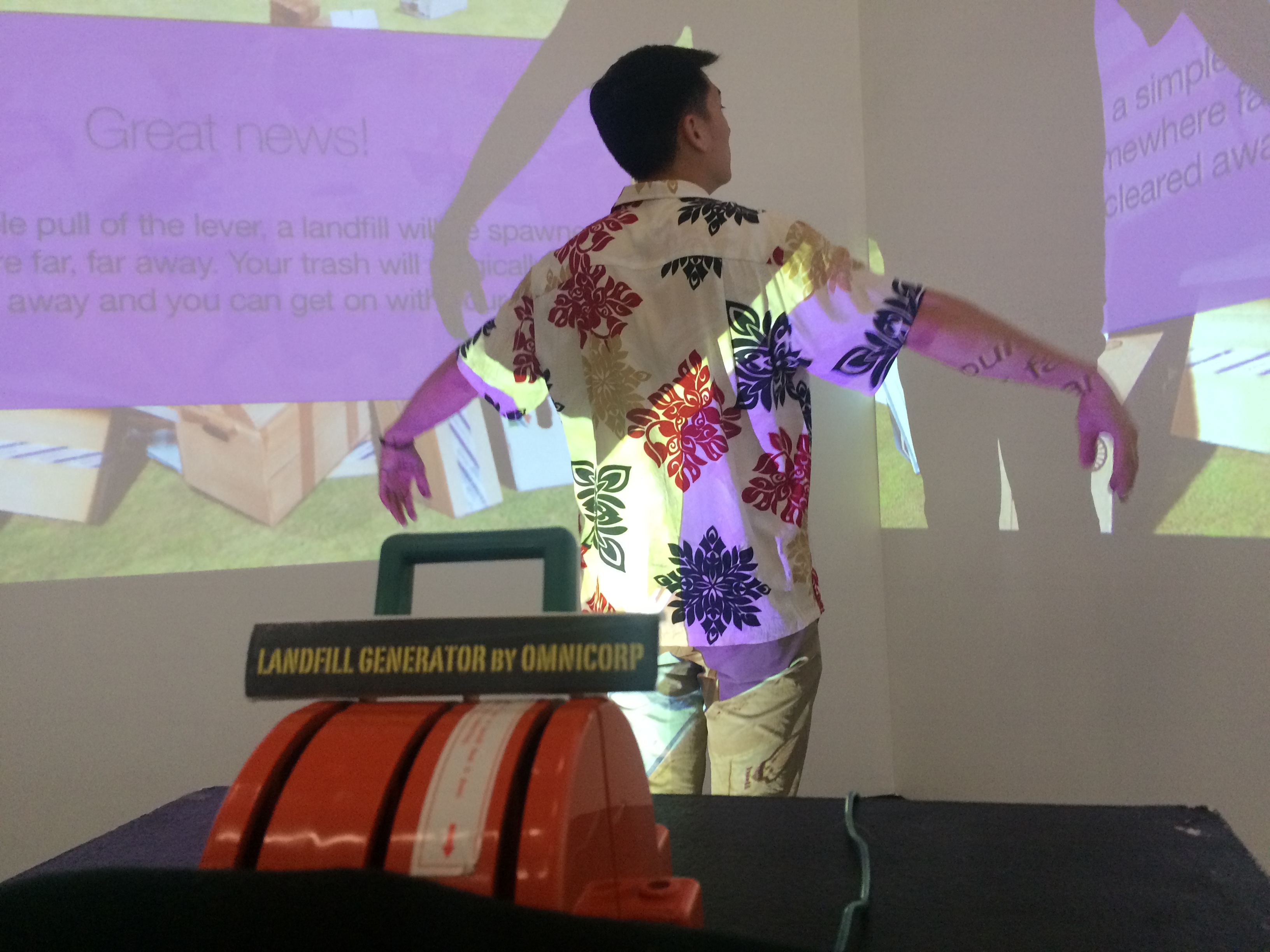
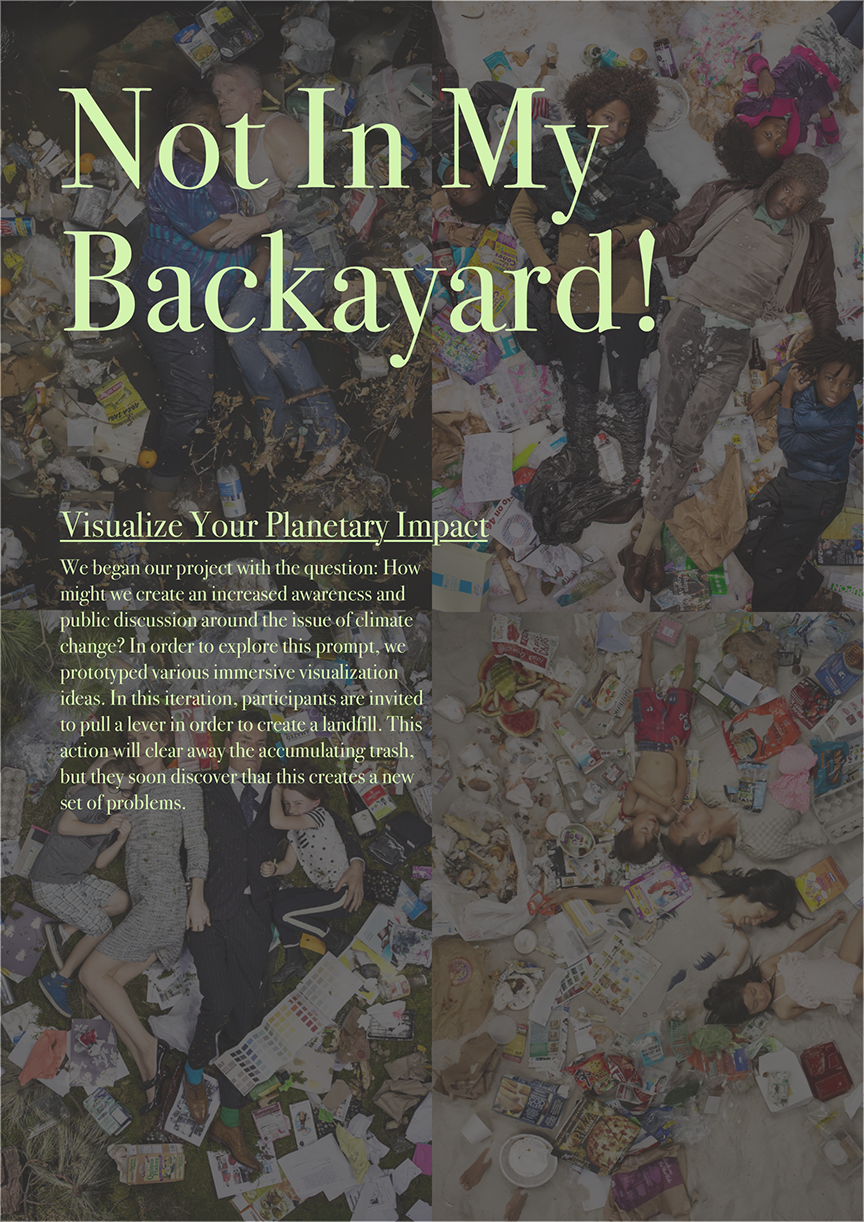

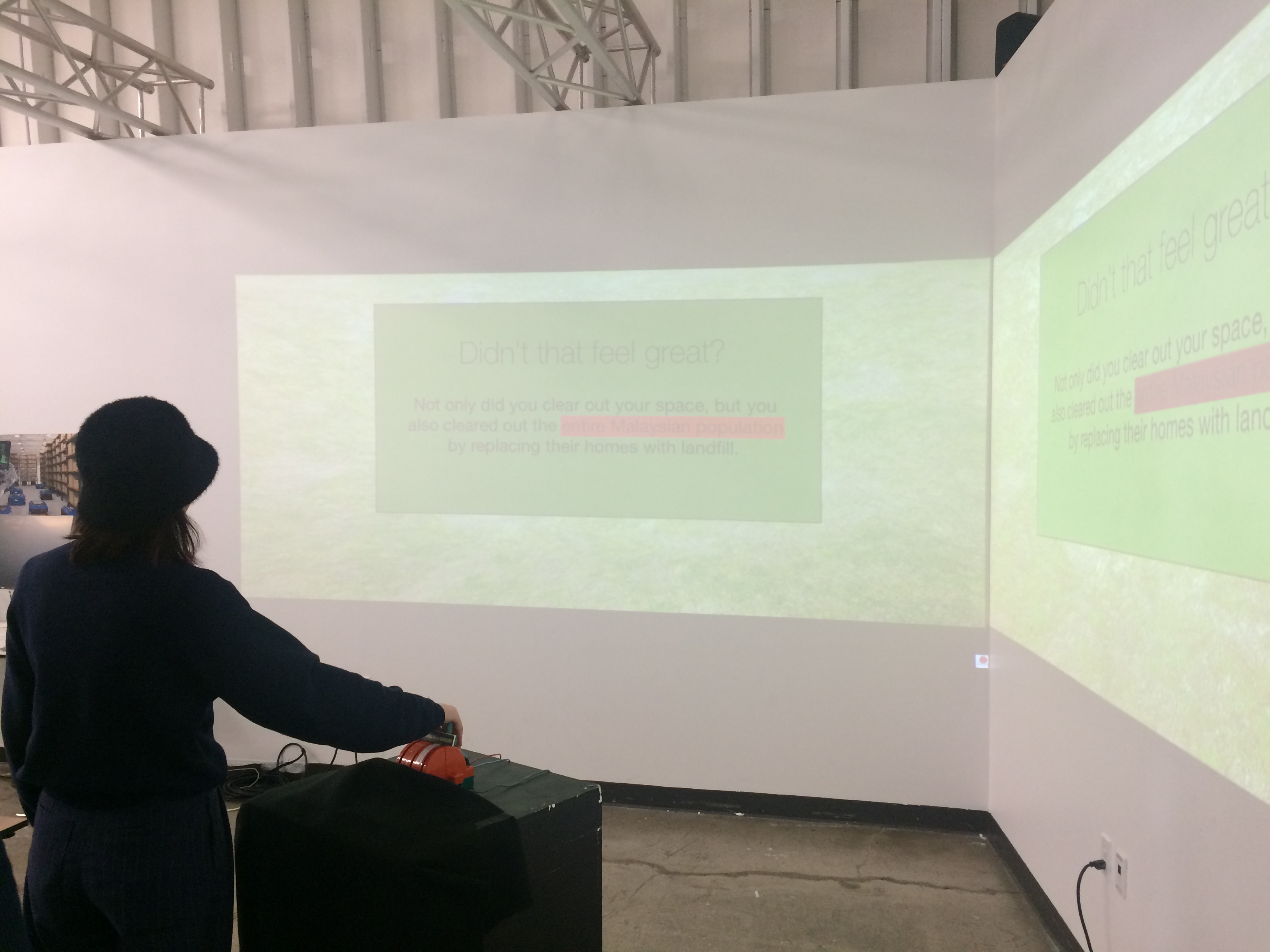
Following are behind the scenes initial concept sketches and setup testing documentation.
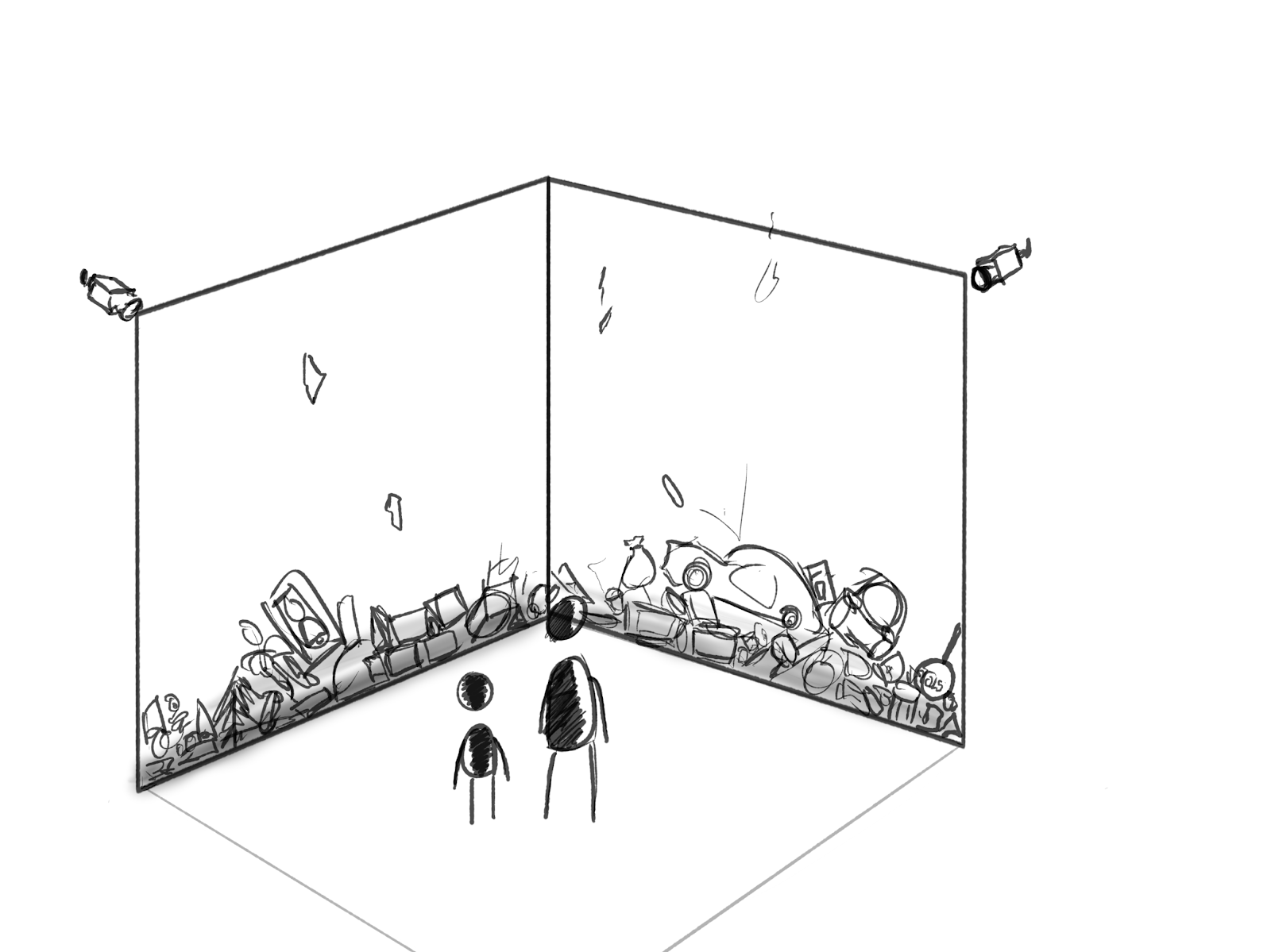
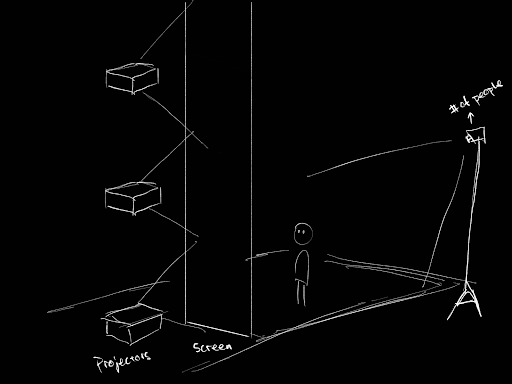
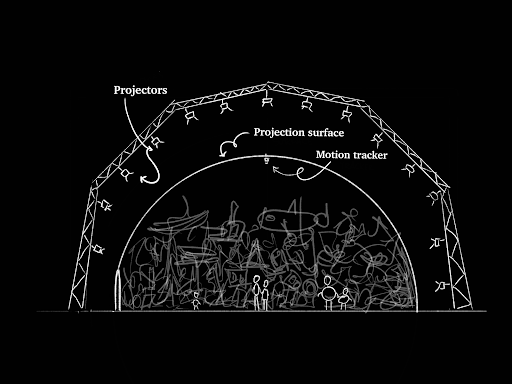

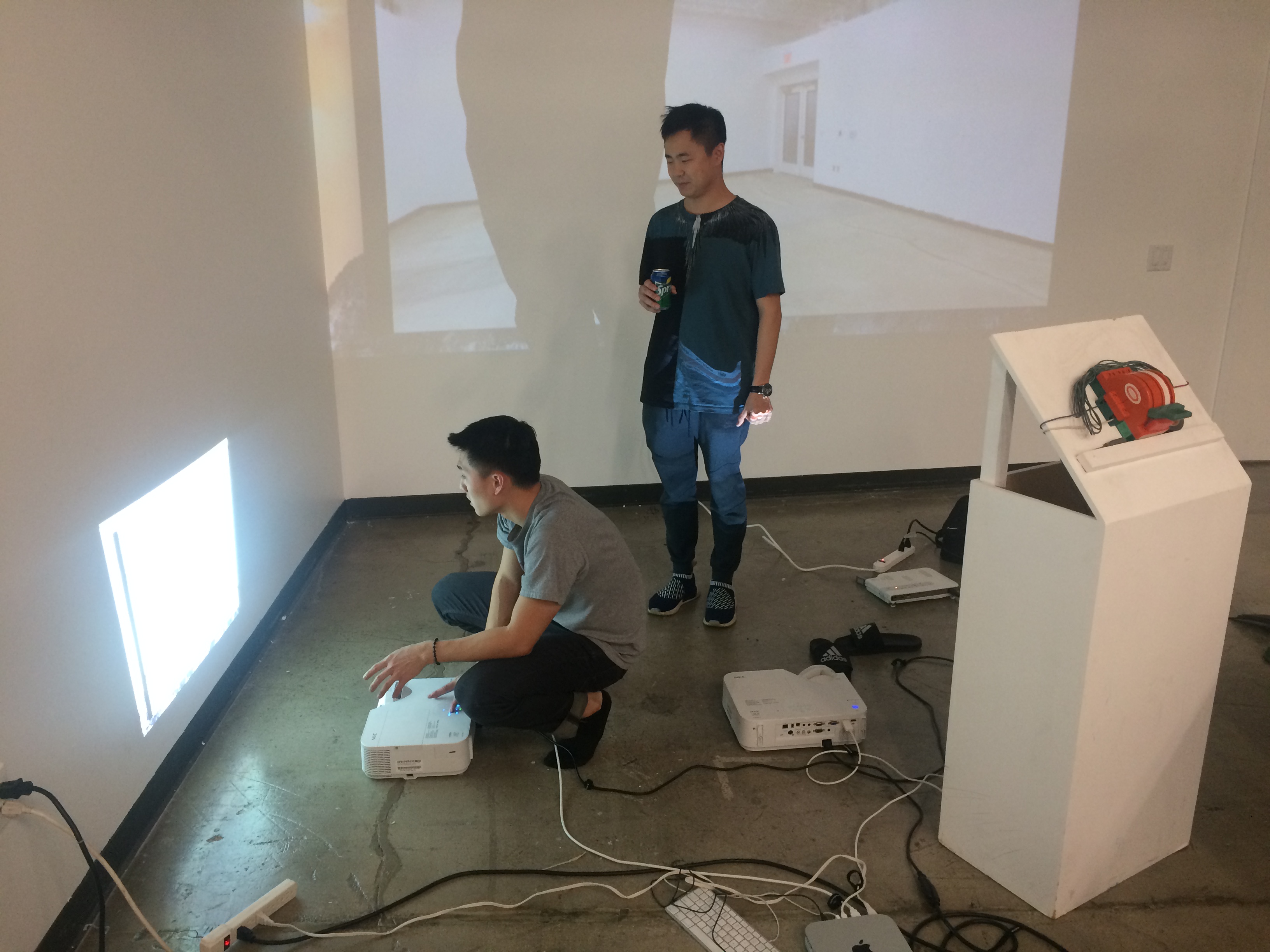
REFLECTIONS
Having built and tested our initial prototype for this concept, I feel that immersive visualization has the potential to be a viable conversation starter thanks in part to the power of images and connection to space. From a feasibility perspective, the technology to create such a system
already exists and is waiting for a creative way to implement the concept. Climate change,
limited non-renewable resources, and massive global pollution are real and require real action.
While there is no single solution to the climate crisis, building an awareness and deeper
emotional connection may serve as part of the conversation that can steer us in a more sustainable direction.
We enjoyed working together with the benefit of structure from the course, including instructor and class feedback along the way to iterate toward the final deliverable. In the end, we were able to make a dark subject somewhat playful and experiential, while acknowledging the challenge of finding entry points to intervene in existing systems of infrastructure and power.
MATERIALS AND TOOLS
-Mac Mini
-Short throw media projectors (x2)Final Cut Pro
-3 Pole Disconnect Knife Switch
-Adobe Photoshop
-Adobe Illustrator
-VLC
-Unreal Engine
-Makey-Makey
PROJECT BRIEF
Participate in an in-class workshop which results in self-assembling into groups around design challenges and technology interests. Formulate design questions around the selected challenges. Discuss and critique possible solutions. Propose and diagram a methodology and implementation for the selected solutions. Create and present technical prototypes around your concept to be displayed in a gallery show format.

CLASS
Creative Technology 3
INSTRUCTORS
Maxim Safioulline and Joshua Walton